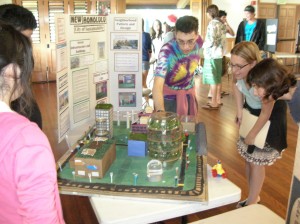Exploring Alternate Futures

Originally appears in the Fall 2011 issue
Futuring is the science of exploring and evaluating probable future possibilities or alternative ‘futures’. Essentially, futuring entails using analysis of current trends to predict future scenarios. Market analysts, stock and futures traders, and weather forecasters all employ futuring in making predictions. The futuring techniques described in this article are more global in scale, and are akin to strategies used by governments and various think tanks to make projections and judgments about the future. Today, over 50 universities across the world offer programs in future studies. However, relatively few resources on futuring exist for middle and secondary school educators.[1] This article aims to expand on existing offerings with a project-based approach to futuring.
The project outlined below provides a simple way to introduce futuring methods such as scenario writing, trend analysis and “backcasting” to your students. First, students engage in a scenario-writing exercise in which they hypothesize three (or more) different future scenarios for the world, or for a limited geographical area. Students then explore impacts of those future scenarios by creating artifacts ‘from the future’ (such as videos, letters and postcards) for each scenario. Lastly, students will use the backcasting technique to envision which programs, policies, and actions in the present will make their own preferred vision of the future more likely.
Student Scenario Writing
In this section, you will learn how to guide students in writing several alternative future scenarios. Scenarios are hypotheses of how a trend or trends, strategies, or wild card events will create different future situations. Scenario thinking is an effective way to study the future since we cannot know precisely how the future will play out. The goal of writing scenarios is to “help us conceive of new possibilities, to explore wildly different alternatives, and to integrate many different factors into our thinking about the future.”[2]
To view the photo-rich magazine version, click here.
If you are not already a subscriber, please subscribe to read the full article
Lance C. Boyd has taught in public and private schools in the U.S. and Canada. He recently worked in Singapore to help teachers incorporate project-based futuring into their lessons as a Fulbright Fellow and currently works at the East-West Center in Honolulu, Hawaii.
Leave a Reply
You must be logged in to post a comment.





